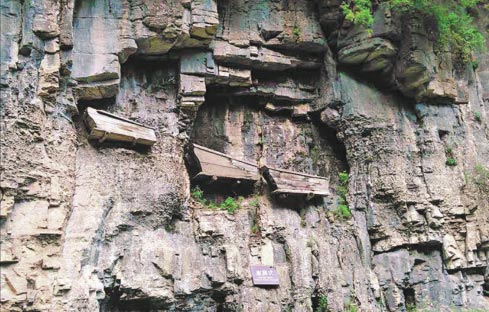Wondrous delights in NW Shanxi
 |
|
Hanging coffins on Luya Mountain are said to be the remains of soldiers killed in early wars. [Photo by Wang Xiaohai/China Daily] |
Perhaps an even more unusual sight is the number of hanging coffins at some 200 sites, making them a standout in China in terms of their numbers.
They also rank high as antiquities because of the variety of positions-some are in a cave; but others hung there on the cliff face supported by wooden poles or secured by lines.
Archaeologists have put forth many possible explanations for these curious coffins, one of which is related to the particular geological location.
Ningwu was a hotly contested site with many battles for hundreds of years, involving government armies, invaders, rebels, or other ethnic groups, and many soldiers lost their lives. To preserve them, their fellow soldiers suspended them up on the cliff.
Also, for strategic reasons, a hanging village was built in the area at the end of the Ming Dynasty (1368-1644).
It is about 30 km from Ningwu Pass, the last pass before entering the Chinese capital, Beijing, during the Ming and Qing dynasties (1368-1911). When a rebel leader, Li Zicheng, took the Ningwu Pass from the Chongzhen emperor (1628-1644) of the Ming, dethroning him, the emperor sought to save his fourth son by hiding him in a temple in the remote mountain area, while searching for a way and a chance to re-take the strategic pass.














